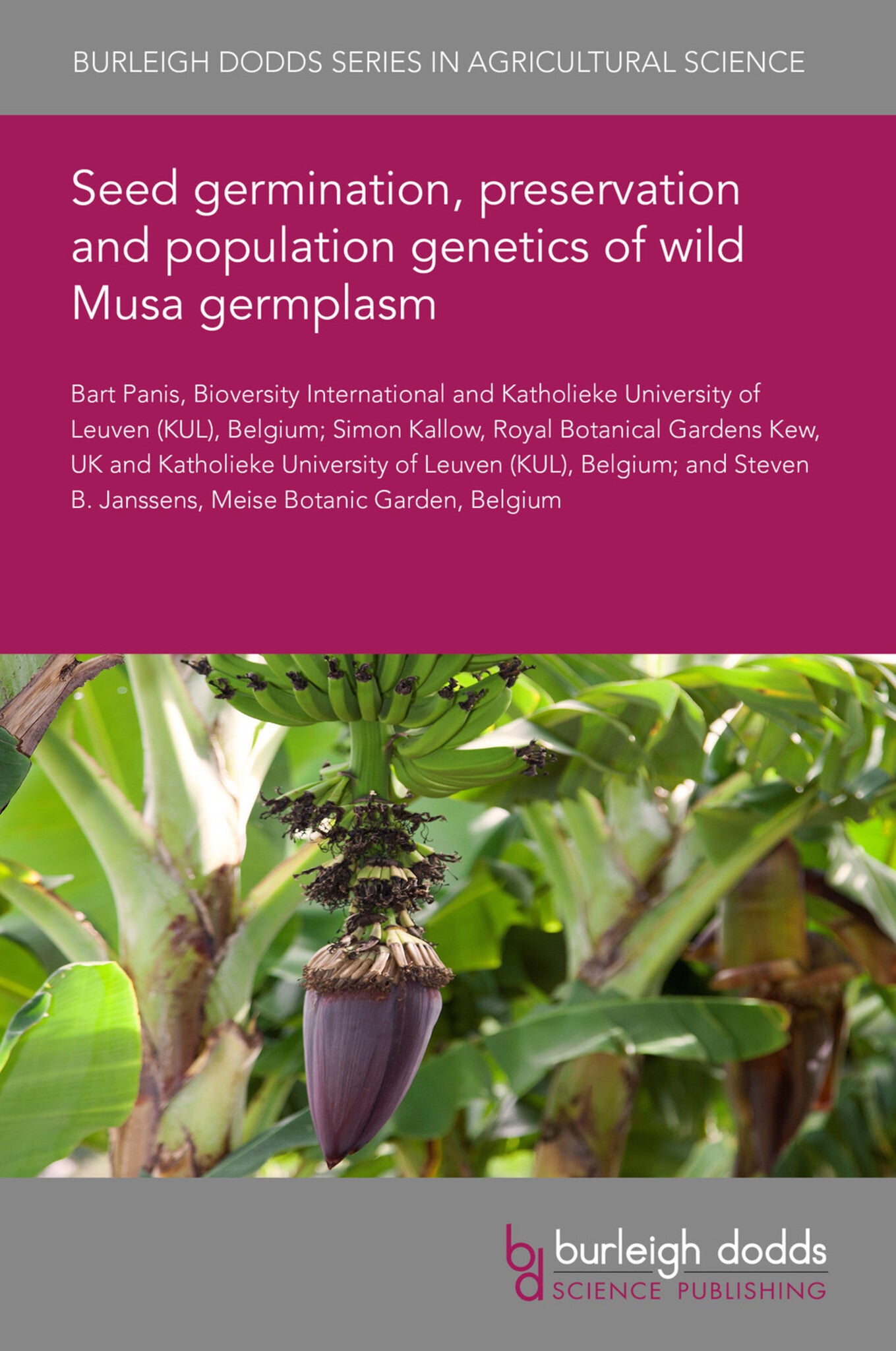We're sorry. An error has occurred
Please cancel or retry.
Seed germination, preservation and population genetics of wild Musa germplasm
Regular price
£25.00
Sale price
£25.00
Regular price
£25.00
Unit price
/
per
Sale
Sold out
Re-stocking soon
Bananas and plantains (Musa spp.) are amongst the most important tropical and subtropical food crops in the world. In order to reduce the impact of biotic and abiotic factors on banana cultivation,...
Read More

Some error occured while loading the Quick View. Please close the Quick View and try reloading the page.
Couldn't load pickup availability
- Format:
-
23 November 2020

Bananas and plantains (Musa spp.) are amongst the most important tropical and subtropical food crops in the world. In order to reduce the impact of biotic and abiotic factors on banana cultivation, it is important to allow for a genetic enrichment of the currently cultivated genepool. Crop Wild Relatives play an important role in modern plant breeding as they contain important traits for agriculture. Their conservation is therefore essential for future sustainable agriculture and food security. This chapter focusses on the different aspect and techniques that are required to establish seed collections of wild bananas. This covers physiology and morphology of the banana seeds, difficulties encountered during their germination and putative solutions, possibilities for medium and long term storage and population genetics.

Price: £25.00
Publisher: Burleigh Dodds Science Publishing
Imprint: Burleigh Dodds Science Publishing
Series: Burleigh Dodds Series in Agricultural Science
Publication Date:
23 November 2020
ISBN: 9781786769435
Format: eBook
BISACs:
SCIENCE / Life Sciences / Horticulture, Commercial horticulture, TECHNOLOGY & ENGINEERING / Agriculture / Sustainable Agriculture, Botany and plant sciences, Sustainable agriculture, Agronomy and crop production

1 Introduction 2 The importance of conserving crop wild relatives (CWRs) 3 Seed morphology 4 Seed germination 5 Storage of wild Musa germplasm 6 Population genetics of wild bananas 7 Future trends and conclusion 8 Acknowledgements 9 Where to look for further information 10 References



